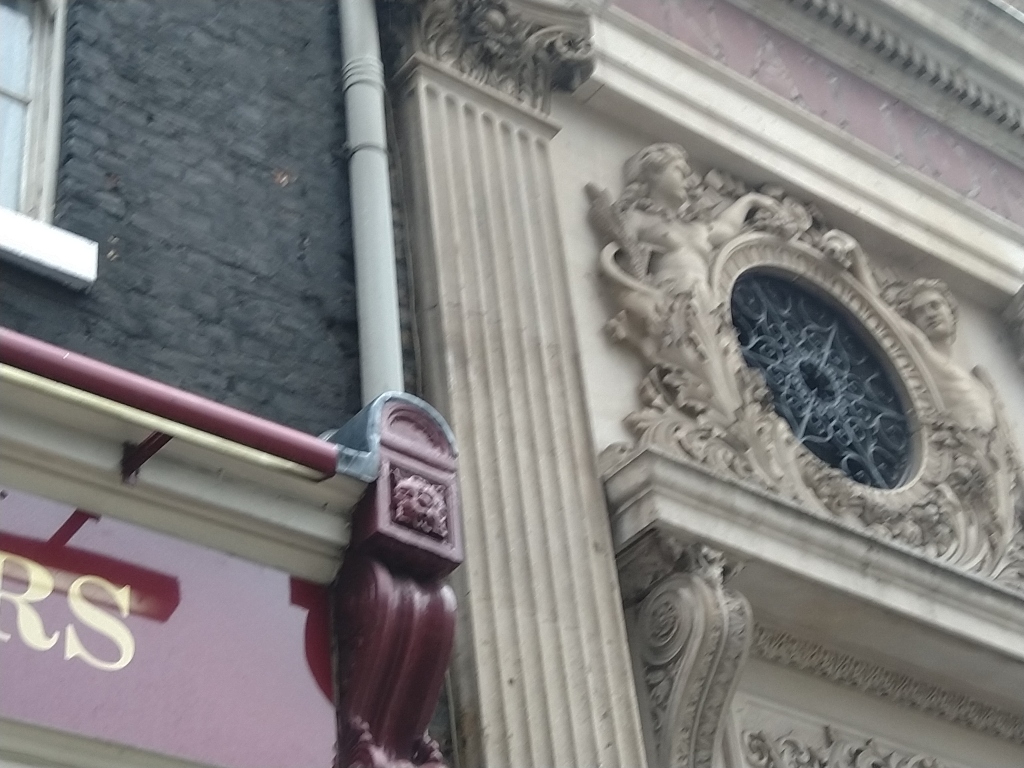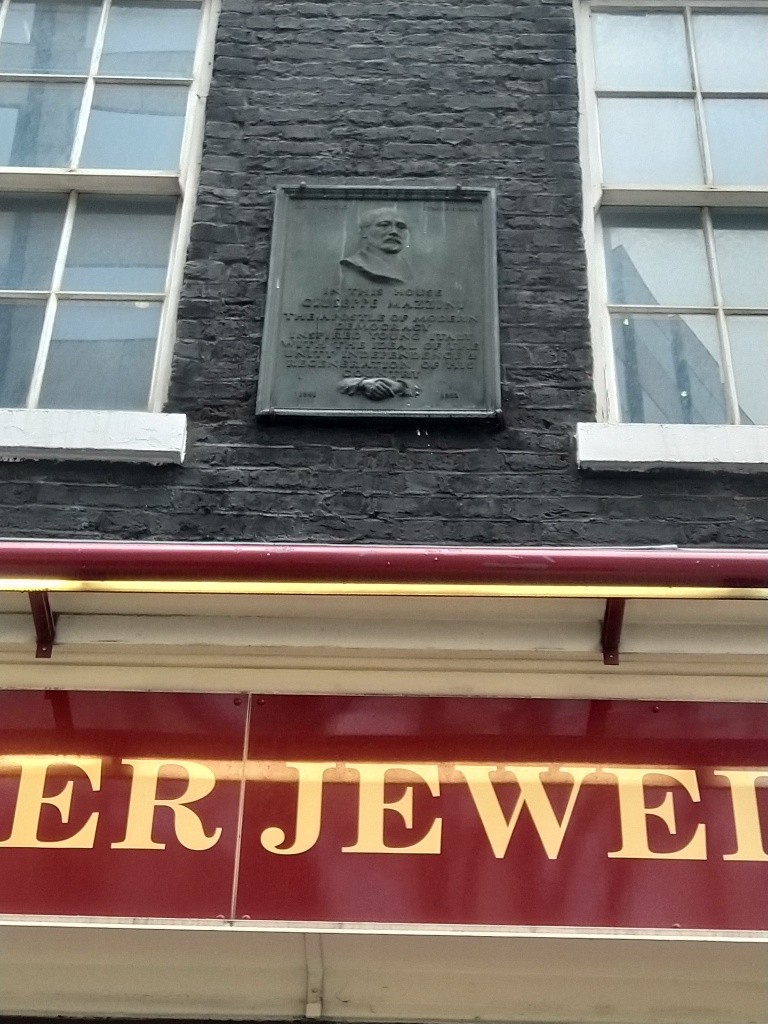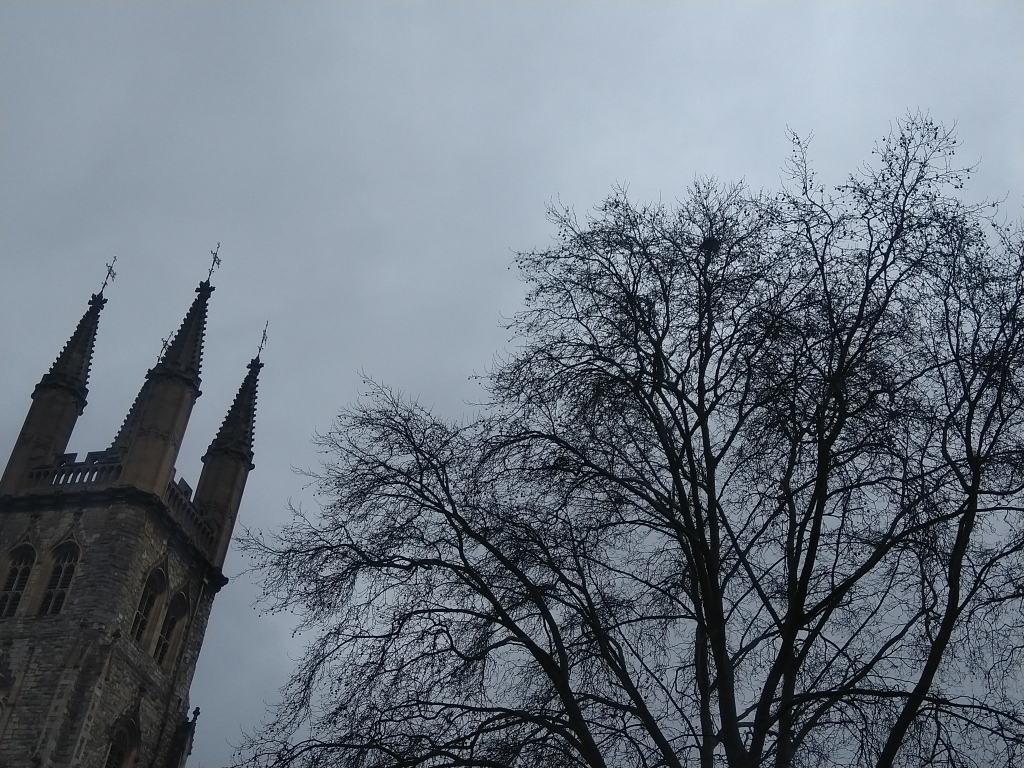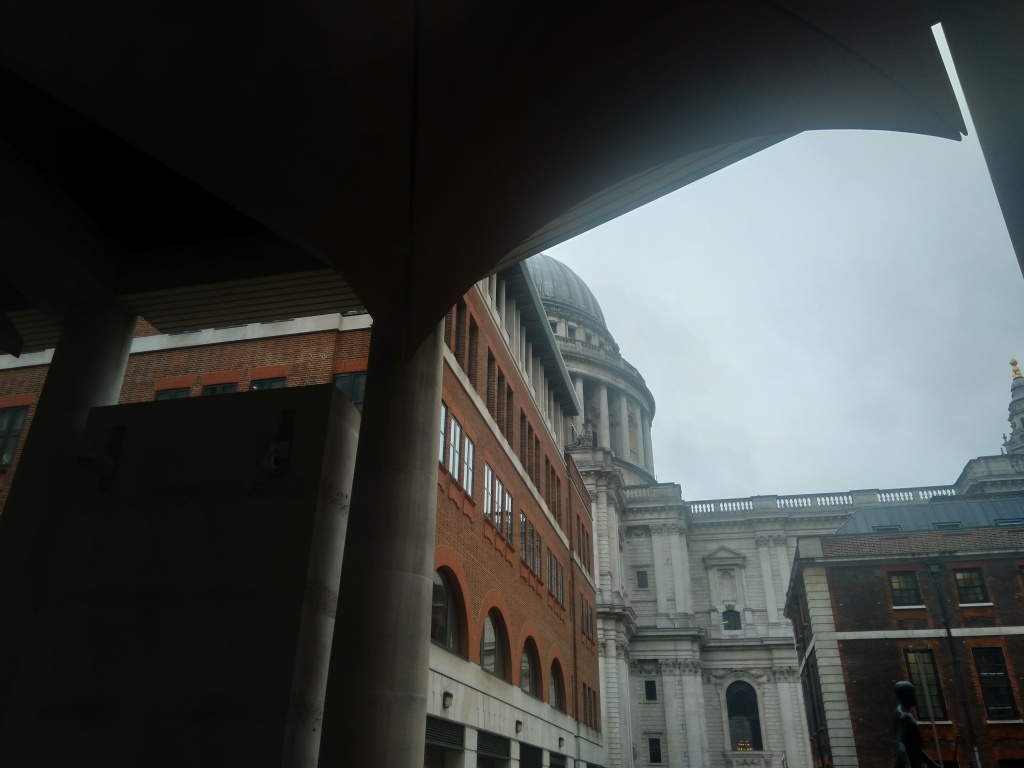The ‘Urban Wanderer’ course began on 28 February 2020 at the Mary Ward Centre in Queen Square, London. It was due to run for six weeks, and it started promisingly. I was maintaining a temporary news blackout at the time, so only dimly aware of rumblings about a dangerous ‘coronavirus’.
After the first meeting of the course I walked from Queen Square to Liverpool Street with the stipulation, look up. This was to be an experiment that I would propose to students in the second half of the course.
From Guilford Street and Doughty Mews, a flag draws the eye upwards on John Street. It’s the Malawi High Commission. A friend of mine worked in the Malawi government at the time, and I always liked to walk past on the vanishingly small off-chance that he’ll be visiting the UK. No official cars at the High Commission, so I move on.

To Leather Lane and Hatton Garden, where the modern jewellers’ shop fronts dominate below the plaques and stucco features which hang largely unseen.

‘In this house Giuseppe Mazzini, the Apostle of Modern Democracy, inspired young Italy with the ideal of the unity, independence, and regeneration of his country.’ Mazzini (1805-72), has a blue plaque in North Gower Street, and another plaque on Laystall Street, just up the road, but this is much more covert, and, unlike the other two, not mentioned on his Wikipedia page!

On to Holborn Viaduct. This ornate symbol of the potency of the City of London, complete with cute silver dragons, has a statue above each of the four corner supporting columns. Each is a women, personifying Commerce, Agriculture, Science and Fine Art. If I took a photo of Commerce, I since lost it, but, knowing me, I probably shunned Commerce on purpose.


These four personifications, four pillars of the city, are reminders of a lost economy. They suggest a diversity of equal interests that seems now to be a mockery in a city where everything is read through the value of commerce, rather than any intrinsic value.

Behind Fine Art we can glimpse a bust of Minerva/Athena, complete with gorgon-emblazoned aegis, mounted on an Ionic column. As a goddess she has many associations, craft and war among them. She also protects mythic heroes, often quest heroes. I think of Athena’s guidance of Odysseus on his wanderings, and particularly his final journey on foot, to walk inland until someone mistakes his oar for a winnowing tool. Walks should be transformative, but I’ve got a long way to go.

Continuing to look up, I saw the quadruple spires of the Holy Sepulchre Church competing in grandeur with the nests in the late-winter trees.


And then the Central Criminal Court on Old Bailey. The plain (i.e. non-fluted) ionic columns, frieze and bronze statue of Justice, descendant of the goddess Dike are all built on Classical Greek models. These Pagan images, of course, do not clash with the Christianised sculpture and cross above the entrance: such clashing symbols have long been naturalised to the British / European eye.
I notice that using looking up as an activity for the walk is a good route to becoming an expert in the variety of CCTV camera design.
I walk past the Central Criminal Court, turn up to Fleet Street and, forgetting exactly how the streets fit together, am suddenly surprised by St Paul’s – a marvel.

Now walking through Paternoster Square: a famously privatised public space with its own strange restrictions on behaviour. I think you’re not allowed to wear a hat – oh no, you’re allowed to wear a hat, you’re not allowed to wear a mask, or something like that. I thought I was engaging in an act of bold subversion by taking a photo of the dome of St Paul’s obscured by the blander new buildings of Paternoster Square (owned by Mitsubishi Estate Co. Ltd), but then I realise the time and hurry to catch my train.
Next week, 6 March (2020 is a leap year), I’ve had to pay a bit more attention to the news. People in the class are talking about the virus. I’m sceptical about the severity at this point, despite troubling reports from Italy. I’m about to be proven extremely inattentive.
As a task for this week’s walk, looking down is no good: many of us do that already. There are many things to notice on the ground, but active noticing is a different sort of activity. Instead, I pay attention to signs…
There are new signs this week. I set out from Queen Square to the north and west, in the direction of Euston Road (via Gower Street, probably). University College Hospital registers that the world is changing. I photographed a sign.
![Sign attached by cable ties to railings. The sign reads: "HM Government. NHS. [Left arrow]. This way. NHS 111 CORONAVIRUS POD."](https://uncannycities.wordpress.com/wp-content/uploads/2023/04/img_20200306_153344.jpg?w=768)
With a dim intimation of what is about to happen, I wondered if this photo would quickly come to be seen in bad taste… Instead, what seemed so novel then, is now crushingly familiar.
The course met in person one more time, but several students quite reasonably kept away to avoid inessential travel on public transport. Soon enough, we were all sent to our rooms, and I set up this website to continue the course as best I could. I didn’t see London again until June 2021.

